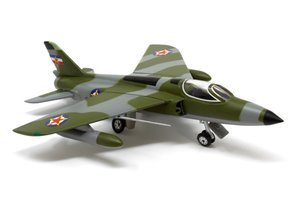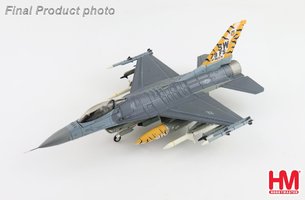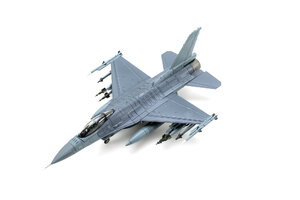GLOSTER JAVELIN FAW9 XH892 NORFOLK AND SUFFOLK MUSEUM FLIXTON
| Výrobca modelu: | Aviation 72 |
| Objednávací kód: | AV7254003 |
| Mierka: | 1:72 |
| Materiál: | Kombinovane (Kov / Plast) |
| Letecká spoločnosť: | RAF |
| Výrobca lietadla: | Gloster Javelin |
Popis produktu
Kovový model lietadla s detailnym zobrazenim potlače podľa originálneho stroja s presným označením registračného čísla.
Kolieska su pohyblive z kvalitnej gumy. Kvalitné finišovanie kovu a hladké opracovanie.
Stojan sučasťou balenia.
The Gloster Javelin was a twin-engined T-tailed delta-wing subsonic night and all-weather interceptor aircraft that served with Britain’s Royal Air Force from the mid-1950s and until the late 1960s. The last aircraft design to bear the Gloster name, it was introduced in 1956 after a lengthy development period and received several upgrades during its lifetime to its engines, radar and weapons, including support for the De Havilland Firestreak air-to-air missile.
The Javelin was succeeded in the interceptor role by the English Electric Lightning, a supersonic aircraft capable of flying at more than double the Javelin’s top speed, which was introduced into the RAF only a few years later. The Javelin served for much of its life alongside the Lightning; the last Javelins were withdrawn from operational service in 1968 following the induction of successively more capable versions of the Lightning.
The Javelin entered service with the RAF in 1956 with 46 Squadron based at RAF Odiham, England. The Javelins were immediately put to use in an intensive flying programme, rapidly to familiarize crews with the type. The introduction of the Javelin was eased by the establishment of a partial Operational Conversion Unit, a specialized team to assist the members of other squadrons in converting to the type.During RAF trials, the type proved readily capable of intercepting jet bombers such as the English Electric Canberra and modern jet fighters, over a hundred miles out to sea.
A second squadron, 141, would be equipped with the Javelin in 1957, replacing the squadron’s de Havilland Venom aircraft. The introduction of the Javelin, allowed the RAF to expand its night-fighter activity considerably, taking over night standby duty from American forces.By the end of July 1959, all remaining Meteor squadrons had been converted, many having been assigned to operate various models of the Javelin, including the newest FAW.7 variant.
The closest that the RAF’s Javelins came to combat, was during the Malaysian Confrontation with Indonesia from September 1963 until August 1966. Javelins of 60 Squadron, later joined by 64 Squadron operated out of RAF Tengah, Singapore flying combat patrols over the jungles of Malaysia. In 1964, an Indonesian Air Force Lockheed C-130 Hercules crashed while trying to evade interception by a Javelin FAW.9 of 60 Squadron. During June 1967, following the disbandment of 64 Squadron, 60 Squadron was deployed to RAF Kai Tak, Hong Kong because of unrest in the colony during China’s Great Proletarian Cultural Revolution. Javelins were also deployed to Zambia during the early stages of Rhodesia’s Unilateral Declaration of Independence, to protect Zambia from any action by the Rhodesian Air Force.
The last of the type was withdrawn from service in 1968, with the disbandment of 60 Squadron at RAF Tengah at the end of April 1968.One aircraft remained flying with the Aeroplane and Armament Experimental Establishment at Boscombe Down until 24 January 1975.















